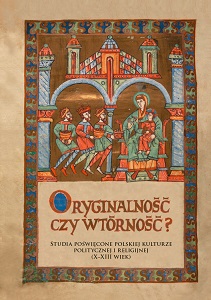Żydzi, świętokradcy i pokój książęcy. Wokół instytucji protekcji monarszej w Polsce piastowskiej
Jews, perpetrators of sacrilege and ducal peace. On the institution of ruler’s protection in Piast Poland
Author(s): Radosław Kotecki
Subject(s): Middle Ages, 6th to 12th Centuries, 13th to 14th Centuries, 15th Century
Published by: Wydawnictwa Uniwersytetu Warszawskiego
Keywords: medieval history; church history; Christianity in the Middle Ages; religious culture; Poland during the Piast dynasty
Summary/Abstract: The article is an attempt to contextualize an institution of Piast rule, in the oldest Polish customary law called “lordly peace” or “the lord’s hand,” and in charters referred to as “the duke’s protection.” It is proposed that the description of Duke Mieszko III’s first Cracow reign included into Chronica Polonorum by Master Vincentius at the turn of 13th century should be considered an important evidence of the ducal peace in Poland. It clearly alludes to the concept of peace as a tool for preventing violence towards those enjoying ruler’s protection. Having analyzed the chronicled examples of punishing the offenders of Jews and other foreigners along with the information about punishing in exactly the same way those committing sacrilege, the author points to analogies between the Piast peace and Western institutions of king’s peace, mundeburdium regis or cyninges handgrið for instance. The inquiry clearly proves conceptual closeness between ducal peace and those phenomena manifesting in connection with the public sphere or monarch’s domain, and most evidently in the involvement of ruler’s offi cials as well as bishops in maintaining peaces/protections. The observed analogies allow one to conclude that ducal peace in Poland, at least at some stage, was influenced by Western patterns of royal power and justice. This in turn led the author to question the notion favoured in modern historiography, that ducal peace (or mir) as a whole was a relic of the so-called tribal organization.
- Page Range: 27-75
- Page Count: 49
- Publication Year: 2020
- Language: Czech, Polish
- Content File-PDF

